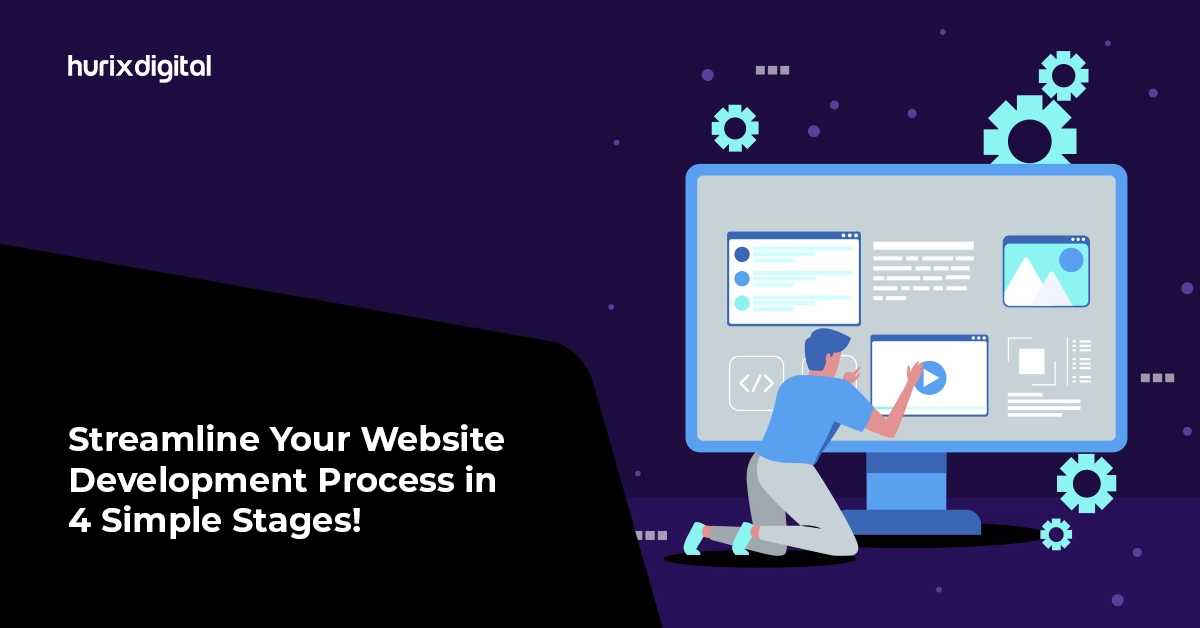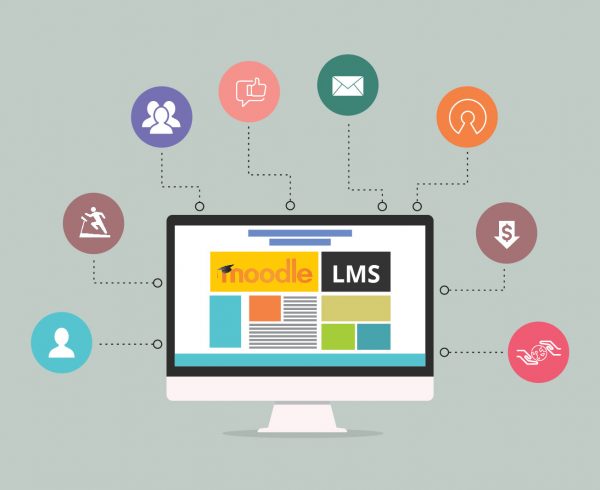Summary
This comprehensive guide deconstructs every stage of the website development process in 4 simple stages. By following the standard website development process, you can create a website that is both search engine friendly and user friendly.
Did you know that around 71% of companies worldwide have a well-defined website as part of their online presence? Projects for developing websites can take many different forms, but the general procedure is always the same.
Whether you are creating a large brand refresh with many products or a small, up-to-date brochure website, adhering to an established methodology will guarantee that you are setting up a website that is both search engine-friendly and user-friendly.
The numerous steps and stages in developing a website before the final product is launched can make the process overwhelming. However, understanding each phase as per established standards can make the process smooth and seamless.
From the first planning phase to the ultimate launch and beyond, this comprehensive guide deconstructs every stage of the website development process. Let’s get started!
Table of Contents:
What is a Website Development Process?
A documented, standardized series of actions that must be followed to successfully finish a web application or website development project is known as a website development process. This procedure aids in coordinating teammates, stakeholders, and growth resources to guarantee that every facet of the project is handled and completed on schedule.
Creating a useful, fascinating website that satisfies user and company requirements is the aim. The actual procedure of developing a website implies a planned course to organize, create, construct, and eventually open the site to the public.
By adhering to the established proforma of the website development process, you can systematically plan, execute, test, and refine your website over time.
Also Read: Digital Inclusivity Matters: A Guide to Accessible Website Development
4 Stages of Web Design and Development
From the initial concept stage to the result of the final launching, a website is created through a series of conventional phases that make up the website development process.
Here are the standard four crucial stages of website development that are widely used:
Phase 1: The Initial Phase of Planning
It’s critical to start with a plan when developing a website. This strategy will assist you in identifying the website’s objectives, consumer base, attributes, and general layout.
It’s not necessary to spend a lot of time or effort developing a strategy for your website. However, It is imperative to dedicate sufficient time to streamline your website’s objectives and determine the most effective way to develop it to fulfill them.
Here are the significant aspects of the planning phase:
- Establish user/business objectives: What is the aim of this website? For instance, important objectives can be to provide information, facilitate reservations, generate leads and sales, etc.
- Perform user research: Create personas, execute interviews, and gather data to learn more about your target market.
- Identify the needs: What characteristics, sections, integrations, etc., will be required to achieve the objectives of the website?
- Lay out the content and design of the website: Create flowcharts, site diagrams, and content strategies according to priority.
Phase 2: Designing the Website
You can start with the design and coding stage of your website once you have decided on its objectives and your intended audience. You need to design a website prototype at this phase and choose the general style and experience of the site.
Ensuring the effectiveness and user-friendliness of your website is crucial, so don’t skip this stage in the website development process.
The layout of your website should be your priority. This involves selecting the type of navigation you’d like to use and how you desire your content to be arranged. Here are the crucial elements to be taken into consideration during the design phase.
- Focus on visual promotion and branding with the use of color palettes, typefaces, and images in page designs.
- Create prototypes and wireframes: High-resolution visual comps or low levels of fidelity outline designs.
- Create the foundational pages: Versions of the homepage, content page blueprints, and images.
- Improve user experience flows: Make sure it’s simple to navigate through web pages.
After finishing the design phase, it’s time to proceed to the development phase.
Phase 3: Development
Once the designs are approved, the personalized frontend and backend frameworks are coded by the development team. To build a quick, fluid, and completely functional website, this intricate stage of web development calls for creative technology, modern web advancement methods, and analytical abilities.
The objective of the development phase is to expertly construct each component of a tailored online application, including forms, databases, privacy, cached data, and layout templates. Some of the key elements are:
- Program site design: Set up content management and hosting platforms.
- Integrate external tools: Link all APIs, extensions, and payment gateways per the action plan.
- Frontend development: HTML, CSS, Javascript, and libraries such as Angular or React.
- Backend construct: Server-side programming in Python, Ruby, and PHP.
- Database organization: Create effective data structures.
- Establish an admin interface so that clients can control content.
Phase 4: Steps of Testing and Launching
Testing and launch are the phases of website development that follow the design and coding stage. This is the time when the site is tested to make certain things function as they should. The website is prepared for public release after it completes all testing.
Functional testing and user acceptability testing make up the two sections of the testing phase. The purpose of functional testing is to ensure that each functionality on the website works as intended. Genuine users test the website to determine if it fulfills their requirements; this process is known as user acceptance testing.
The website is prepared for launch as soon as it passes every test. Typically, a trial run or official opening is used for this. When a website is released to customers with media buzz and celebration, it is called a grand opening.
However, a soft launch involves carefully launching the website to a few consumers to gather feedback. Key features include:
- Content migration: Share all pages, blog entries, and merchandise as required
- Data analysis configuration: Link tag manager and Google Analytics
- Setting up SEO: Verify that every web page has optimized metadata
- Turn on privacy by installing firewalls and anti-malware software
- Soft launch: restricted distribution to get early responses
- Official launch: Broader distribution along with advertising
- Post-launch tracking: Keeping an eye for outcomes as well as maintaining a check on critical problems
Also Read: Website Development Trends to Watch Out for in 2024
Takeaway
With its incredible rise, web development has emerged as a pillar of the technological revolution. Methods for building software include frontend development to build user experiences, backend development for server-based features, and full-stack creation for integrating the two.
Web designers currently have a wide range of resources to build evolving, full-featured websites thanks to the advancement of website development techniques.
The need for qualified web developers is only going to grow as more businesses depend on online services. As the internet is always evolving, there are always fresh possibilities for ingenuity and creativity in web development, which broadens the field’s scope.
If you are looking for expert assistance in your website development process, get in touch with Hurix Digital. Hurix Digital’s advanced solutions speed up your business, allow you to be creative, and assist you in leaving a remarkable footprint in the ever-evolving tech industry.











